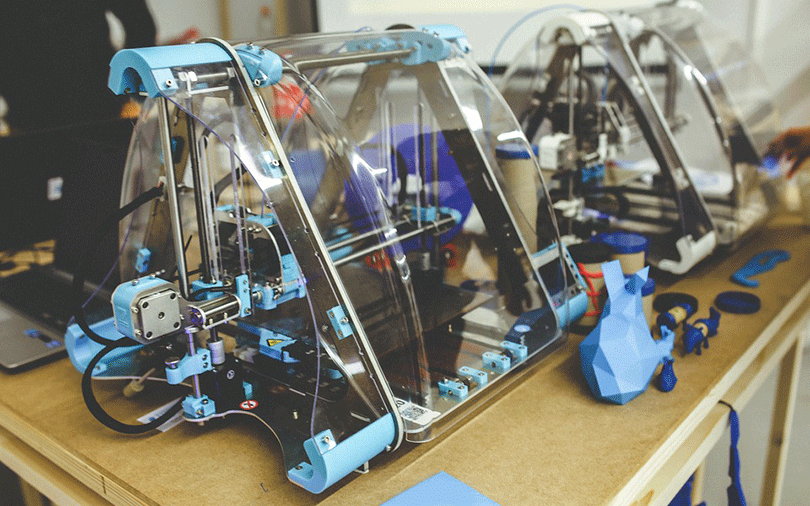
Researchers modify 3D printers to design all-liquid structures


Researchers from Lawrence Berkeley National Laboratory (Berkeley Lab) have partnered with the US Department of Energy to come up with an all-liquid 3D-print structure, which is expected to help create a variety of new electronic devices.
According to a Digital Trends report, the researchers used liquid as the core material in a modified 3D printer to achieve the “additive process”. The researchers injected small streams of water (a few milimetres in diameter) into silicone oil to sculpt tubes of liquid within another liquid.
The scientists said that the technique can be used for liquid electronics. “It is a new class of material that can reconfigure itself, and has the potential to be customised into liquid reaction vessels for many uses, from chemical synthesis to ion transport and catalysis,” Tom Russell, visiting faculty scientist at Berkeley Lab, was quoted as saying.

A New Atlas report said that during the injection process, a very thin coating of nanoparticle supersoap is formed around the water threads to lock the structure inside the tubes, which keeps the water separate from the silicone oil.
According to the Digital Trends report, the scientists used the “protective flexible glass sheath (which was) shrunk down to a molecular level” to create a number of different structures, some of them several meters in length.
“This stability means we can stretch water into a tube, and it remains a tube,” Russell was quoted as saying. “Or we can shape water into an ellipsoid, and it remains an ellipsoid. We have used these nanoparticle supersoaps to print tubes of water that lasts for several months.”

In terms of modifying the 3D printer, the team modified it printer in a way that would allow it to force out liquid through a syringe. “We can squeeze liquid from a needle, and place threads of water anywhere we want in three dimensions,” researcher Joe Forth was quoted as saying. “We can also ping the material with an external force, which momentarily breaks the supersoap’s stability and changes the shape of the water threads. The structures are endlessly reconfigurable.”
The researchers believe that the new process can also be used in repairing electronic devices.
The 3D-printing market has increasing by leaps and bounds over the past few years. A report by market research organisation IDC said that expenditure on 3D printing is expected to reach $3.6 billion by 2021 in the Asia-Pacific region with a five-year compounded annual growth rate of 22.4%.

A study by market research and investment information firm Profshare Market Research said that the global market for 3D printing of medical devices was estimated to touch $2.77 billion by 2017.
India has also witnessed interest in the emerging technology. In the last week of February, SoCoMo Technologies Pvt. Ltd, which runs delivery services and auto-rickshaw aggregator app Jugnoo, had said it will sell 3D printers as well as provide on-demand 3D-printing services, in partnership with a Korean firm.
In January, US-based tech mojor HP Inc. had introduced its 3D printing technology solutions in India in partnership with two Indian companies.

